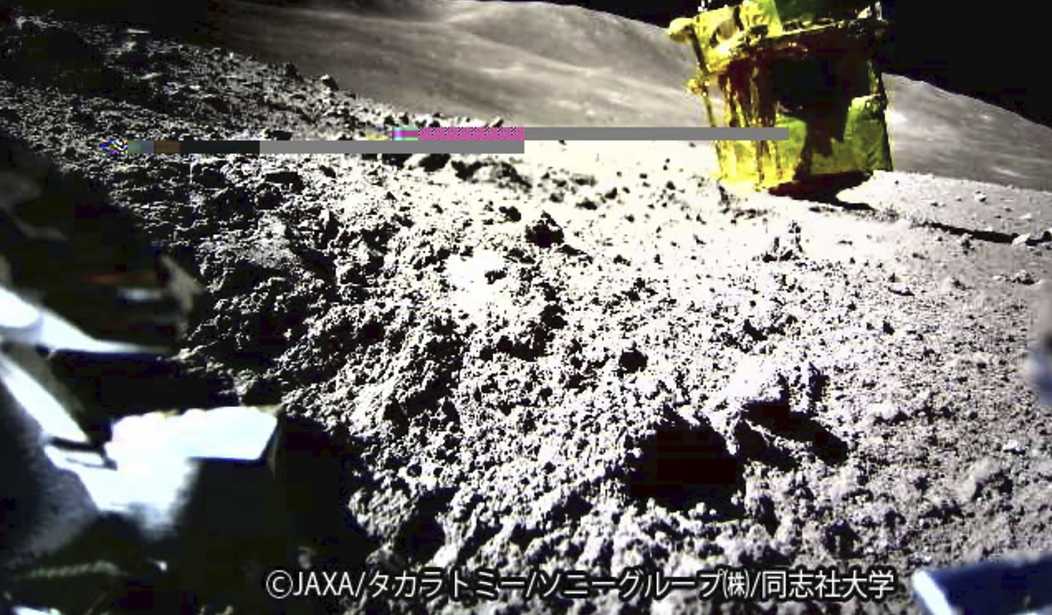Even though we haven’t put human beings on the moon in over 50 years, several space agencies are attempting to explore the lunar surface with landers and robotic probes. It’s a small club of nations that have landed something on the moon, and Japan recently became the fifth nation, joining the U.S., China, India, and the Soviet Union.
The Japan Aerospace Exploration Agency (JAXA) launched its SLIM lander (short for “Smart Lander for Investigating Moon”), and SLIM landed only about 60 yards from its target on Jan. 20, but there was one slight problem. SLIM landed upside down.
The mission was a risky one from the start. Most agencies aim to place landers on flat, smooth areas, but JAXA was hoping to land SLIM in an area between two craters. The rocky landing site likely played a role in SLIM’s rough landing.
JAXA used SLIM’s battery power to determine that it landed where it was supposed to and take a few pictures of the lunar surface. Then JAXA turned SLIM off and waited patiently to see if it would be able to function.
“Based on this landscape image, the team is sorting out rocks of interest, assigning a nickname to each of them, with [the] intent of communicating their relative sizes smoothly by the names,” read part of a statement from JAXA. “Preparation is underway to promptly conduct 10-band high-resolution spectroscopic observations once the solar illumination condition improves and SLIM recovers by the power generated by the solar array.”
Flashback: Here's What I Learned at the Press Briefing for DART: NASA's Planetary Defense Mission
There’s some good news coming out of what sounds like a debacle. SLIM, which JAXA has given various nicknames, including “Toy Poodle,” landed at just the right angle for its solar panels to charge the lander when after the dawn of lunar day. On Saturday, SLIM came back to life.
Communication with SLIM was successfully established last night, and operations resumed! Science observations were immediately started with the MBC, and we obtained first light for the 10-band observation. This figure shows the “toy poodle” observed in the multi-band observation. pic.twitter.com/WYD4NlYDaG
— 小型月着陸実証機SLIM (@SLIM_JAXA) January 29, 2024
Here's the most fascinating part of the story. The landing included ejecting two robotic rovers, LEV-1 and LEV-2, to begin exploring the area around the landing site. One of those robots took the image of SLIM that helped JAXA see how SLIM landed. Ejecting LEV-1 and LEV-2 was one part of the mission that went according to plan, and it allowed JAXA to clarify what happened upon landing.
“So if the vehicle had not successfully landed in that sense, we would not know that it's upside down. How’s that for a parable of humanity?” mused Dr. Albert Mohler on his podcast on Monday morning.
The two robot probes are conducting experiments and activities on the lunar surface. JAXA and SLIM are specifically looking for clues among the rocks on the surface of the moon, aiming to learn more about the moon’s origins.
JAXA hopes that there’s enough lunar daylight for SLIM to continue to function most of the week, but it’s unclear how it will function once the sun sets and the lander experiences the frigid lunar night. Japan’s effort to join the nations that have explored the moon was a good-news-bad-news adventure, but hopefully, the Land of the Rising Sun will be able to gain some valuable insight into the moon before the sun sets on SLIM.










Join the conversation as a VIP Member